We finally made it! Last Saturday (and a little bit of Sunday) we managed to put our hands on the new hot topic in the mirrorless world, the Sony A7 & A7r. It goes without saying that the A7 & A7r are the announcement of the year. Sony was the first brand to have the guts to put a full frame sensor into a mirrorless interchangeable-lens system and at a very competitive price! And yes, the price is probably the most important aspect of those new cameras.
I usually don’t waste too many words on the price of a camera unless it is too high, but here we have a pleasant surprise. Let’s be clear, they aren’t cheap and as a system they will require a big investment but if I think about the price of the RX1, the first compact full frame camera, when it was first released, the least I can say is that Sony has become very competitive now. The brand desperately wants these products to succeed, probably more than other products that they have released before.
Are the A7 & A7r the cameras many photographers and mirrorless enthusiasts have been waiting for?

From RAW, post-processed with Lightroom 5.3
Click on the picture to open it in full size.
Full Frame
… or image quality without any compromise
For those who are wondering why this article is named Part 2, the reason is that I have already published a preview of my first impressions of the cameras in the form of a personal consideration about full frame sensors, why they matter and up to what point they are really worth it.
Sony decided to take the big step and they decided to do it right. The A7 & A7r have great sensors hidden away inside them. There isn’t really a solid ‘con argument’. Of course, I haven’t used the camera for an extended period so I cannot show you all the great advantages or the minor limitations I may come across, but the tech specs are pretty clear. We have a 24 megapixel sensor in one corner, with a phase detection autofocus system, and a 36 megapixel sensor with no AA filter and contrast detection AF in the other. The A7 has the more versatile sensor which is also better with autofocus, while the A7r has a “resolutionary” sensor which can push the limits of professional digital photography just as the D800/D800E did last year. (We are of course excluding medium format and the Sigma DP series as they are very different types of cameras).
But concretely speaking, what is the meaning of these exciting numbers?
Resolutionary…

FE 55mm f/1.8
Post processed with Image Data Converter

Let’s start with the Sony A7r, which image quality wise, is certainly the most appealing of the two cameras. The lack of the low-pass filter means better sharpness and combined with the 36 mp of resolution, it should become a pretty solid reference for dynamic range and overall quality as well. Reviewing my photos, I got the feeling that I was looking at a more “tridimensional” image. A resolution that high and a degree of sharpness that precise gives a new sense of realism to the image in comparison to other mirroless cameras. The photographs seem more powerful and dynamic. This is not a technical reflection but my first real impression after I reviewed the pictures for the first time on my computer. I can really see the potential for viewing the images on a high quality monitor or a large print.

FE 28-70mm f/3.5-5.6
This said, I also found that with this amount of resolution, you need to be more careful. Handling 36mp is not like handling 12 or 16mp. Everything has more detail, so focus and micro-shakes need to be controlled more than ever. Don’t expect to see that magical sharpness if you aren’t careful enough with your settings when you take the shot. Also, as of now, with most lenses you won’t get any stabilisation, so if you enlarge them at 100% you might be surprised to find that many pictures which appeared in-focus on the camera screen are actually slightly blurry.

FE 55mm f/1.8
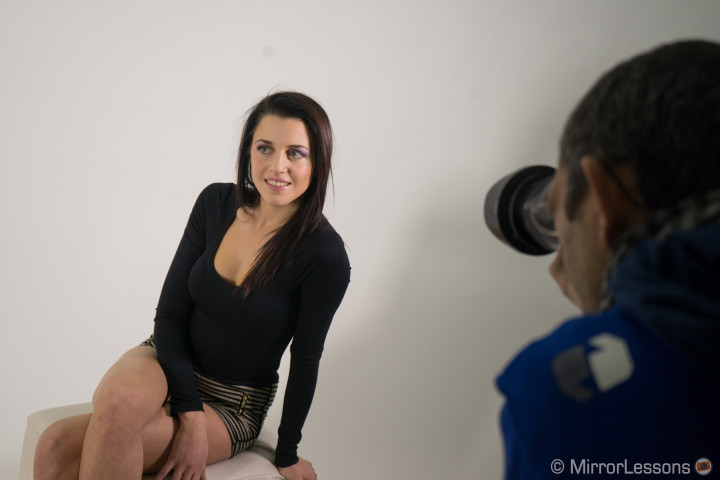
FE 28-70mm f/3.5-5.6
Now, I must state that the cameras we tested were demos which didn’t have the latest “industrial” firmware update so this might also be the cause of the less-precise autofocus. I will need to review a complete model to say more about the AF in general. From what I’ve seen, the A7 is faster, but neither excels concerning autofocus speed or accuracy.
If I had to choose right now, the A7 and its 24 megapixels sensor would be more than enough for me. I am not desperate for that amount of resolution or sharpness. Certainly, I could consider the A7r for certain jobs where its 36mp sensor could make a real difference not only for the image quality but also the final output. Otherwise, the A7 would satisfy the rest of my needs. And still, with the AA filter and its 24mp, sharpness is anything but lacking.
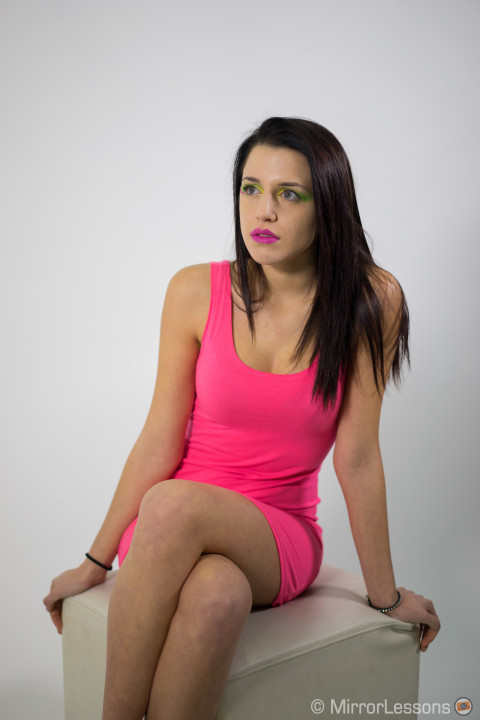
FE 55mm f/1.8
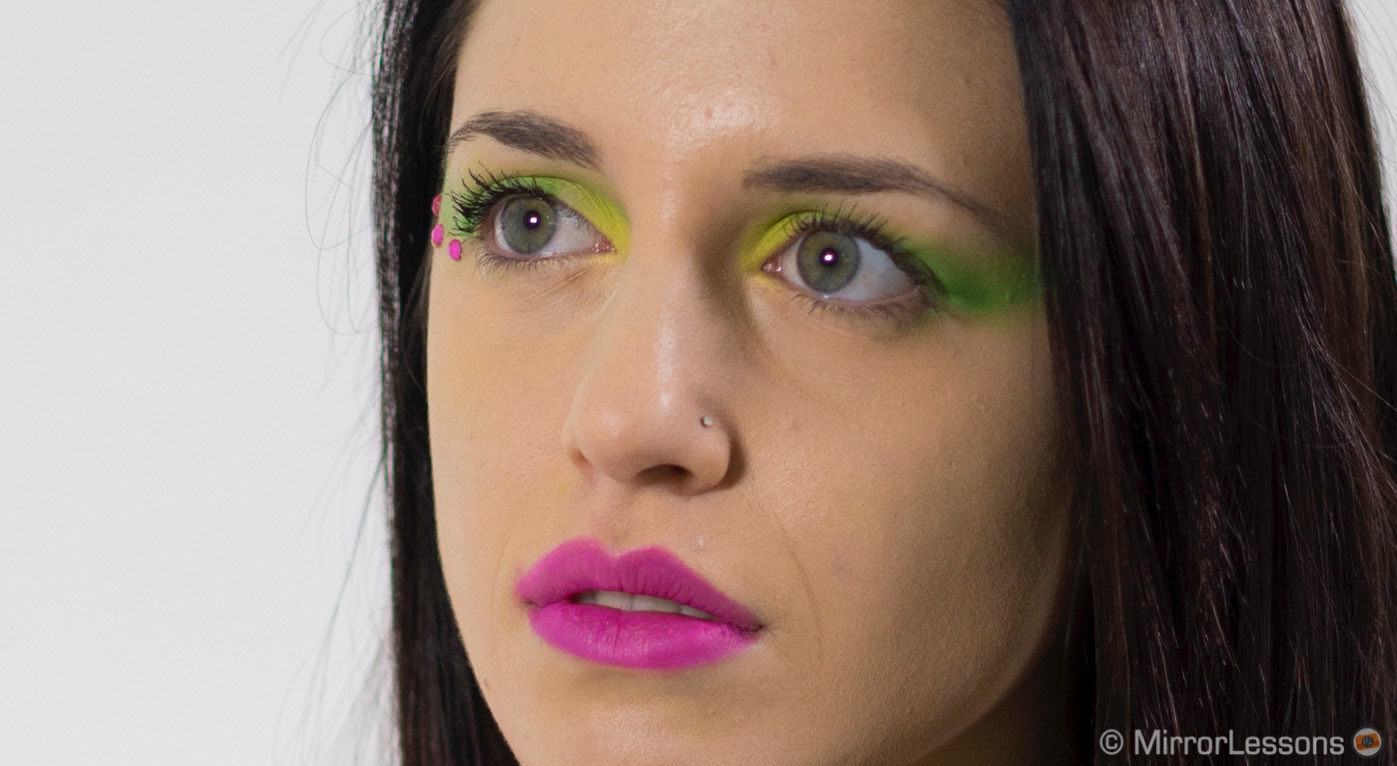
I didn’t make a direct comparison as the time we had with the cameras was limited and I wanted to concentrate on other aspects. For those who are undecided between the two camera, the answer is pretty simple for me.
The A7r is more specific; I would choose it for specific projects, not for my general photography. The A7 can cover 90% of what the A7r can.
There is one thing which I find a little bit of a shame, and that is Sony’s choice not to draw a more noticeable line between the two cameras. For me, the perfect combo would have been:
- An A7 with a 16mp sensor and a native ISO range of 100-12800 like the Nikon D4
- An A7r with its 36mp and lack of AA filter.
Since the D800 was certainly the reference for the A7r (also because Sony produces many Nikon sensors including the D800 one), why couldn’t the Nikon D4 be the reference for the A7? If this had been the case, the A7 would already be happily housed in my camera bag. (Well maybe, let’s say the chances would have increased significantly!)
Talking about ISO, I must say that both cameras deliver exactly what you would expect from the latest generation of full frame sensors. Even without the crazy D4/Df ISO range, the detail retained at high values and the amount of grain is certainly a big advantage with those cameras. The cameras can shoot up to 25600 ISO.
I would be curious to compare them to the X-E2 since I really love the high ISO rendering of the X-trans sensor. Anyway, the examples below are certainly proof of the A7/A7r’s superiority amongst MILCs regarding high ISO performance. The A7 might be slightly better thanks to the AA filter, but I didn’t compare them directly so I cannot confirm this.
I turned off any noise reduction to see the native performance of the sensor. There is a noticeable difference between the OOC JPG as it is softer than the raw file.

FE 35mm f/1.8

FE 35mm f/1.8
Even at 6400 ISO, I still managed to post-process the raw file by opening the shadows, and increasing contrast/colour vibrance without noticing any loss in quality.

Below you can check out other samples, all converted from the raw files using Lightroom 5.3.
I couldn’t take the camera for a long walk around the city in daylight, but I did manage to find some interesting and very contrasted places where I could test the dynamic range. Here again, what I saw is exactly what I expected from a full frame sensor. Very vast dynamic range, and a lot of versatility when post-processing the RAW files. You can notice this especially for the skin – you can easily recover all the details in the highlights even if the skin is overexposed.

FE 28-70mm f/3.5-5.6

FE 55mm f/1.8
I couldn’t test the colour rendition really, but what little I saw looked really promising. Sony seems to have worked a lot in that direction. Colours seem very powerful yet very natural. The Auto WB seemed also very accurate.

FE 55mm f/1.8

FE 55mm f/1.8

FE 55mm f/1.8

FE 35mm f/1.8
I cannot say a lot more about image quality, if not that the camera has a native ISO of 100 and delivers very clean files full of detail. It is certainly a fascinating thing to see on two cameras as small as this. The only thing I noticed is an inaccurate metering. I found that many of my model pictures were underexposed while the metering showed a more correct exposure. This might also be related to the camera not having the final firmware.
Lenses: a very good start
One of the most interesting topics related to the release of these two new cameras is the possibility to use them with various lenses. Since the camera offers focus peaking, I have seen many tests with Leica M lenses posted around the web and there seems to be a deep interest in trying these cameras with any 35mm lens, especially old ones. During the Sony Day at the Riflessi Store in Turin last weekend, I saw many photographers with old Canon, Nikon and other brand lenses in tow, hoping to find the right adaptor to try and mount them.

I personally tried the focus peaking with a Nikkor 85mm f/1.4 lens because there was a Novoflex adaptor available. The peaking lets you choose three colours (white, red, yellow) but I didn’t find it extremely precise. You can choose different levels as well, so I guess it is a question of getting used to it and finding the best combination to understand how to read the highlighted outlines. I also set the aperture at 1.4, just to make things more complicated!

Nikkor 85mm f/1.4 – Novoflex adapter
When it comes to using alternative lenses to the ones natively built for the system, I am always a little bit sceptical. I understand those who still have their old film cameras and lenses but don’t use them a lot of anymore. In a camera like this, they can find a way to keep using their favourite film lenses. Otherwise, there are some considerations/questions that pop into my mind:
- Would you buy an A7/A7r and then start to invest lots of money in Leica lenses, which are more costly than the system itself?
- Will buying a particular manual lens really add something extra to your images?
- Why mount a big heavy lens on such a compact body?
I guess it is also a personal choice and a personal interest. I always try to see the concrete and rational side of things first, maybe because I review many cameras and for me a camera is only good when it is part of a system which is also well-conceived. And what I’ve seen from Sony so far makes me very confident in the developments of the near future. There are currently three lenses available for the native A mount of the Sony A7/A7r.

By the way, here is a very practical use of the 36MP of the Sony A7r. I forgot to take a picture of one of the cameras with the kit lens, but luckily for me Heather took that picture of me while holding the camera with the right lens. And actually I was really lucky as the focus mistakenly locked onto the camera and not me. Just needed to crop it a little bit and… 🙂

The first is the kit lens, a 28-70mm with a non-fast/constant aperture of f/3.5.5.6. Nothing really exciting here. I briefly took a couple of shots with it and saw the performance of a kit lens, nothing more. The AF seemed faster to me on the other two primes.

FE 28-70mm f/3.5-5.6

FE 28-70mm f/3.5-5.6
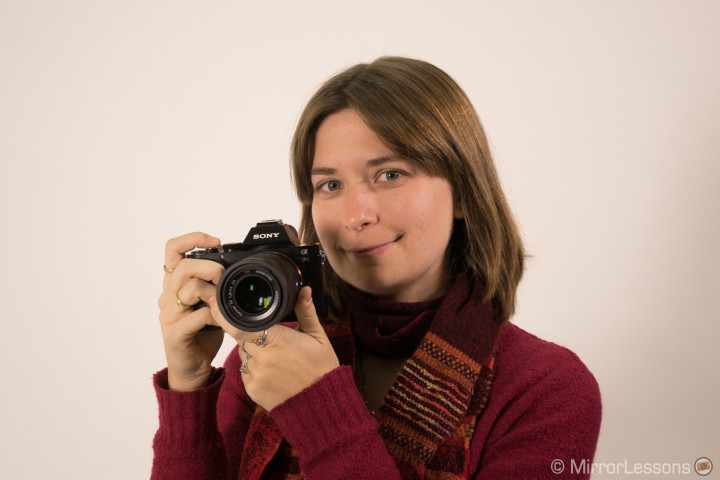
FE 28-70mm f/3.5-5.6
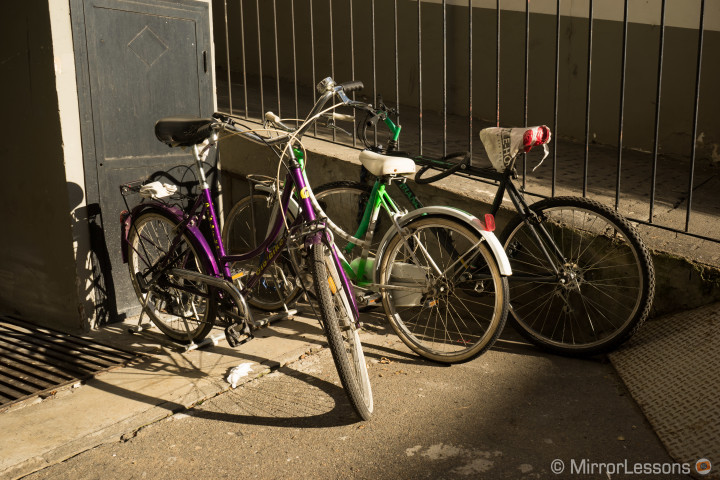
FE 28-70mm f/3.5-5.6
Now what is really interesting are the two Zeiss primes, the 55mm f/1.8 and the 35mm f/2.8. Many have criticised the lack of a faster aperture, but when I saw and held the lenses, it was pretty logical to me.
The A7 and the A7r are compact full frame cameras, and compactness is the strongest point of a mirrorless camera. Having small and compact lenses is the most natural thing for a system like this.

The Zeiss logo is synonymous with great quality, and these two lenses are indeed a very good example of it. Sharp at the fastest aperture, fast AF (up to what the camera can perform), and great definition.

FE 55mm f/1.8
Yes I know, not very flattering for the model, but it gives you a good idea of the IQ of this lens.

FE 35mm f/1.8
Certainly, a f/1.4 lens would be even more appealing but since Sony plans to release 15 lenses for the system, I think we can expect some very fast primes as well. But the two lenses we have as of now really are the perfect relative size for the cameras, and I find this very promising for the system. One of the strongest points of the MFT system is how small most of their lenses are. If Sony takes this route with high-quality compact lenses, the A7/A7r could become a killer system.
Surely, an f/1.4 prime would be larger and bigger – after all, there are certain laws of physics you cannot break. Plus, it would certainly be more expensive. Still, it would be nice of Sony to offer us the choice between two types of lenses – smaller and semi-fast, and large and fast. And let’s not forget that Sony has Zeiss on its side, one of the leaders when it comes to lens quality.
The Sony full frame MILC needs to focus on lens variety and not only on sensor size and quality. This is a key feature for success in my opinion.
We will also see some constant aperture zoom lenses in 2014. There is no info about f/2.8 zooms, only f/4. We will see a 24-70 and a 70-200. The 70-200 actually won’t be very compact. As of now, this is a system I find more suited to primes but since it requires further development, I might change my mind. It’s too early to tell.
The right size
Design, ergonomics & functionality
Some have criticised the design of the new A7 and A7r but I actually like it a lot. It is very simple and straightforward. The dark orange ring on the lens mount is a nice colour touch. The only thing I don’t like is the big “Sony” trademark on the front but I guess this couldn’t be avoided.
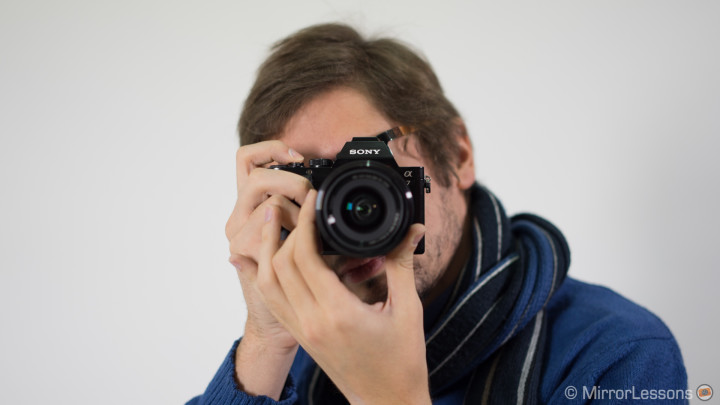
The design aside, I really like the ergonomics of the camera. It is light and feels good thanks to its solid grip. The body is metal while the grip is solid plastic. The two front and rear dials are easy accessible for controlling aperture and shutter speed, while the commander dial on the back will set your ISO. All the main settings are immediately accessible without the need to press any buttons. I also like how Sony has reorganised some menus like the options displayed on the screen when you use the function button. The magnify button you can use when playing back pictures is also a great feature if you want to check the focus accuracy with the simple press of a button.


Both the EVF and LCD are very bright and crisp. The EVF actually surprised me; it is indeed very well made. It probably isn’t as good as the EVF on the Olympus OM-D E-M1 but it isn’t far off really.
I’m certain there are some customisation options but I didn’t dig into. The menu has been conceived very much in the Sony style. I am not really a fan of it as you cannot surf the main categories first like on other cameras. But as with every camera, you just get used to it so it isn’t really a big deal.
Conclusion: a system with loads of potential
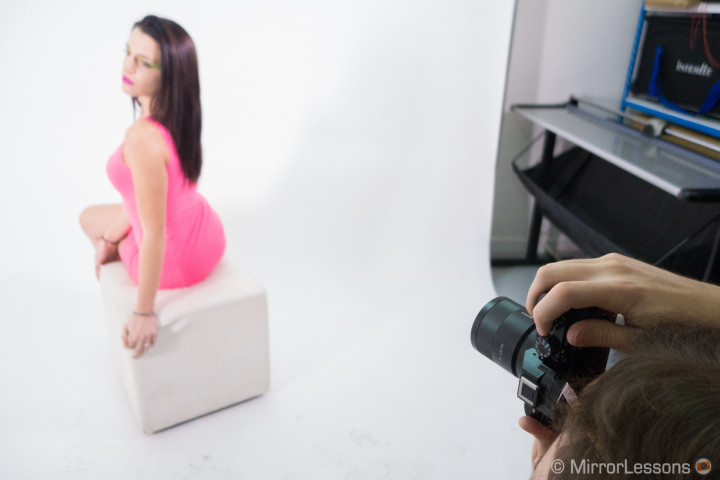
I can say with total confidence that the A7 and A7r made a very good first impression on me. It is light, solid and endowed with the kind of wonderful image quality which makes photographers and enthusiasts shake at the knees. The ergonomics is good – not the best I’ve found, but you quickly get used to it.
At this point, I feel the most difficult job still lies before Sony.
The A7 and A7r are a very good start. Sony has put a camera on the growing mirrorless market which many have dreamed of. Now Sony needs to demonstrate that the move towards full frame is also a move for the people, the photographers, the enthusiasts, not just a marketing ploy.
Sony needs to build a community. They need to have a human contact with their users, and listen to feedback from photographers. They need to build a solid system not only around prestige and glory, but also around the people who are and will be using it.
This is absolutely essential to the system’s success. It is something which Fujifilm has got down to a fine art, for example, and they are now reaping the rewards. Too many people think of Sony as a general electronics brand. And yes it is true that Sony sells Playstations, professional cameras and smartphones. But it is also true that the company has proven very strong in the professional department. The broadcast/audiovisual sector is certainly the best example. Numerous times, Sony has also demonstrated great audacity by releasing new and unique products. My favourite was the mini-disc, a great invention of the nineties which didn’t have the success it deserved. My first professional videocamera was a Sony and I used it many years with lots of satisfaction.
The Sony A7 and A7r are a very important step for the mirrorless market. And they come from a brand which probably has enough resources and money to do anything its wishes. Sony has shown what it is capable of in terms of specs – now, being the only brand to have released a full frame MILC, they need to milk this big advantage they have over other brands for all its worth.
And let’s not forget that if these camera are successful, the competitors may likely jump into action. 2014 could be another very interesting year, better than 2013 if mirrorless technology continues to progress at this rabbit-like pace.
It is an interesting time for photographers, no question about that.
A special thanks to the Riflessi Foto store for hosting the event!




















